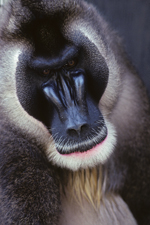A team of New York Stem Cell Foundation (NYSCF) Research Institute scientists led by David Kahler, PhD, NYSCF Director of Laboratory Automation, have developed a new way to generate induced pluripotent stem (iPS) cell lines from human fibroblasts, acquired from both healthy and diseased donors. Reported in PLOS ONE, this cell-sorting method consistently selects the highest quality, standardized iPS cells, representing a major step forward for drug discovery and the development of cell therapies.
Archive for the ‘stem cell’ Category
A New Way to Generate iPS Cells from Fibroblasts
:: Posted by American Biotechnologist on 04-02-2013New discovery may save endangered animals from extinction
:: Posted by American Biotechnologist on 09-05-2011A description of the accomplishment appeared in an advance online edition of the journal Nature Methods on September 4, 2011.
For more information click here.
Cancer cells as cross dressers
:: Posted by American Biotechnologist on 08-22-2011While many scientists have espoused the theory that each type of cancer cell comes from a unique cancer stem cell, research out of the Broad Institute of MIT, Harvard and Whitehead Institute points to a much more decentralized society, with cancer cells able to interconvert between different types.
To characterize how cancer maintains cellular equilibrium, the researchers studied two different breast cancer cell lines and examined three different cell states that were similar to normal breast epithelial cell types, known as basal, luminal, and stem-like. The team sorted the different cell types from each other and then grew their relatively pure populations for six days. Remarkably, each of the three populations quickly returned to the same equilibrium – and populations of non-stem cells generated new stem-like cells.
Click here to read more.
Citation: Gupta PB et al. Stochastic state transitions give rise to phenotypic equilibrium in populations of cancer cells. Cell. August 19, 2011. DOI: 10.1016/j.cell.2011.07.026
There is still hope for stem cell research
:: Posted by American Biotechnologist on 08-07-2011Stem cell scientists, do not despair! Despite concerns over iPSC-derived teratomas and altered genomic and epigenomic states, researchers at UC Davis have written a roadmap for finding solutions to the problems identified with iPSCs which has been published last week in the journal Cell.
According to Paul S. Knoepfler, UC Davis associate professor of cell biology and human anatomy:
iPSCs offer the potential to treat many diseases as an alternative or adjuvant therapy to drugs or surgery. Problems that have been identified with their use likely can be overcome, allowing iPSCs to jump from the laboratory dish to patients who could benefit from them.
To read more click here.
A Scientific Legend’s Approach to Solving Problems and Developing Technologies
:: Posted by American Biotechnologist on 07-26-2011George Church is one of the founders of the human genome project and continues to play an important role in the personal genome project, stem cell research and biofuel research. In this video, Dr. Sriram Kosuri, a Postdoctoral fellow in George’s lab at Harvard University discusses the Church lab’s approach to solving problems and developing technologies.

















